From Wonder Woman’s Invisible Jet to the cloaking devices used by the Romulans and Klingons of the Star Trek universe, science fiction and popular culture are full of examples of completely invisible flying craft. Despite having its roots in fiction, the act of making an aircraft less visible to the naked eye has been an ongoing, but shadowy area of research and development for both private and military laboratories since the early days of military aviation.
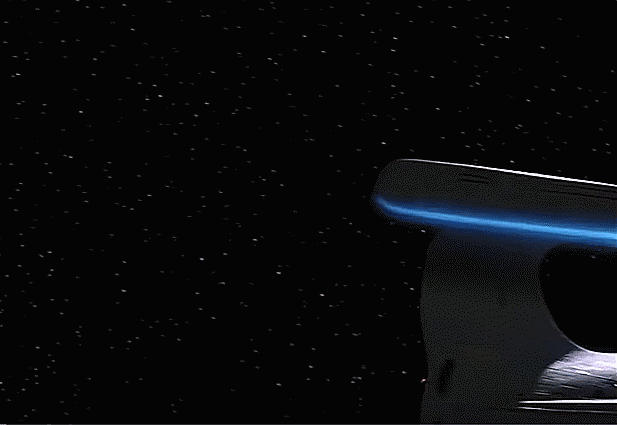
Evading radar systems, infrared sensors, and other sensors is the main strategy behind today’s modern stealthy aircraft, yet the ability to also avoid or delay visual detection remains near the top of the list of strategic aerospace technologies even in an age of increasingly advanced integrated air defense networks.
Being able to detect an aircraft on radar is one thing, and even being able to hear it is another, but the ability to actually see an aircraft remains a huge vulnerability. Tight rules of engagement and the premium placed on using stealth and electronic warfare to penetrate into enemy airspace and even persist there for long periods of time mean that visual detection is still a major Achilles heel of many modern combat aircraft. Thus, the need for the ability to make an aircraft invisible as possible remains as pressing as ever.
While the world has yet to be shown evidence of an “invisible” aircraft or a high-end adaptive aircraft camouflage system that comes close to achieving such a goal, there is more than enough documentation originating from both the Department of Defense and associated private contractors to suggest that these technologies may be very much real. Aircraft like the B-2 already possess systems to reduce their visual signatures by minimizing the contrails they produce, and there is a documented pattern of research and development of other visual stealth technologies dating back the better part of a century that point to the real possibility that such capabilities do actually exist today, at least to a certain extent.
The Yehudi Lights
Since the earliest days of mechanized warfare, militaries around the world have tested different methods of applying camouflage paint to structures, ground vehicles, aircraft, and naval vessels in order to reduce the distance at which they could be detected and positively identified with the naked eye. In recent years, computer-generated and more complex camouflage patterns have improved these techniques, although the effectiveness of these specialized paint jobs still depends on lighting and weather conditions and the angle at which an observer views the aircraft or ship, along with many other factors.
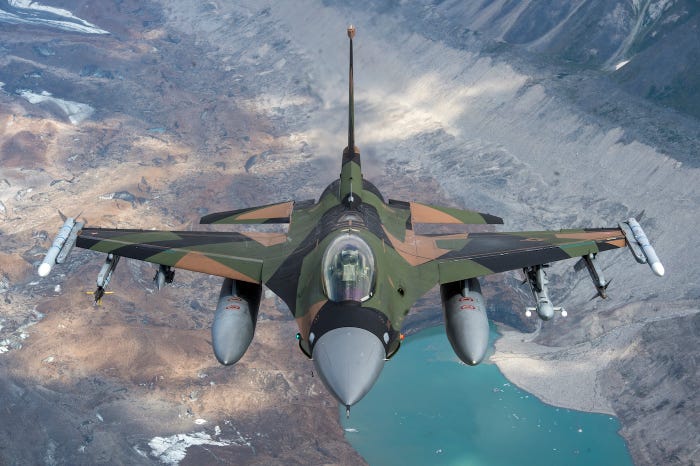
To get around these issues, aviation researchers in the midst of World War II tested methods of using light to camouflage aircraft, whether through controlling the light reflected off of aircraft using non-reflective paints or through a technique known as counter-illumination, which involves projecting light from the aircraft itself to help it blend in with its surroundings. It was in these early studies that the search for an invisible aircraft began in earnest.
The counter-illumination concept is fairly simple. When a bright light is projected against the aircraft’s skin, it is much harder to detect against the daytime sky as it no longer appears as a dark silhouette and literally blends in with the bright sky.
Starting in 1943, the United States and Canada began testing a somewhat crude technology in which light bulbs were attached to the noses and leading edges of aircraft to reduce the distinctiveness of their silhouettes. The concept required setting the lights’ luminosity and color as close as possible to the appearance of the daytime sky. This tactic made it more difficult for opponents to visually detect and identify the aircraft from the critical head-on viewing angle.
These Yehudi Lights, as they were known, could reduce the distance at which aircraft could be visually detected significantly. The U.S. Navy began a program to test the efficacy of these lights first on Grumman TBF Avengers, intending to enable them to better reach German U-boats before they could dive after spotting the aircraft, as well as improve the survivability of the aircraft, in general. According to a 1943 report commissioned by the National Defense Research Committee’s (NDRC) Office of Scientific Research and Development titled “Visibility Studies and Some Applications in the field of Camouflage”, the Yehudi Lights were fairly effective in many circumstances.
“Under conditions such that an uncamouflaged plane was visible at about 12 miles,” the report said, “the plane equipped with Yehudi camouflage could approach to within 3,000 yards without detection, even when its approximate location was indicated by an accompanying uncamouflaged plane.”
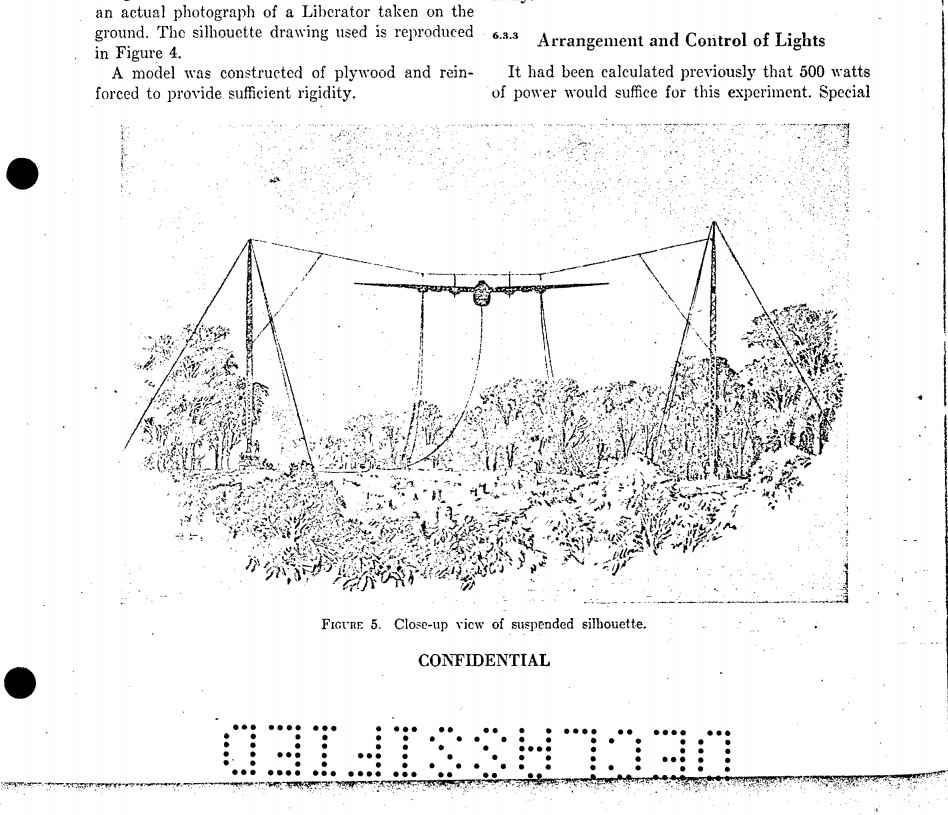
That report also devoted a whole chapter to the “Perceptual Capacity of the Human Observer,” which detailed the extensive testing the NDRC conducted to determine the effectiveness of the Yehudi Lights and other luminous camouflage systems. The chapter outlined numerous research programs conducted by the Army-Navy Office of Scientific Research and Development (ANOSRD) Vision Committee, including lengthy studies into how well human observers could perceive and detect minute changes in luminosity and color or detect a luminous object against a similarly-lit background.
Extensive testing was also conducted in the field that required researchers to develop custom spectrographs for measuring the luminosity and color of natural environments and erect 100-foot-high towers from which to suspend model aircraft fitted with various experimental luminous camouflage systems. Eventually, researchers developed a full-size model of a B-24 Liberator bomber to test the Yehudi Lights system.
While these studies found that luminous camouflage systems could indeed reduce the distance at which an aircraft could be detected, these light bulb-based systems were highly dependent on the environments in which aircraft were flown and were only fully effective from certain viewing angles and distances. Slight changes in atmospheric conditions or weather could significantly impact the effectiveness of luminous camouflage, and the weight, aerodynamic penalties, and power requirements of the light bulbs made them impractical for many applications.
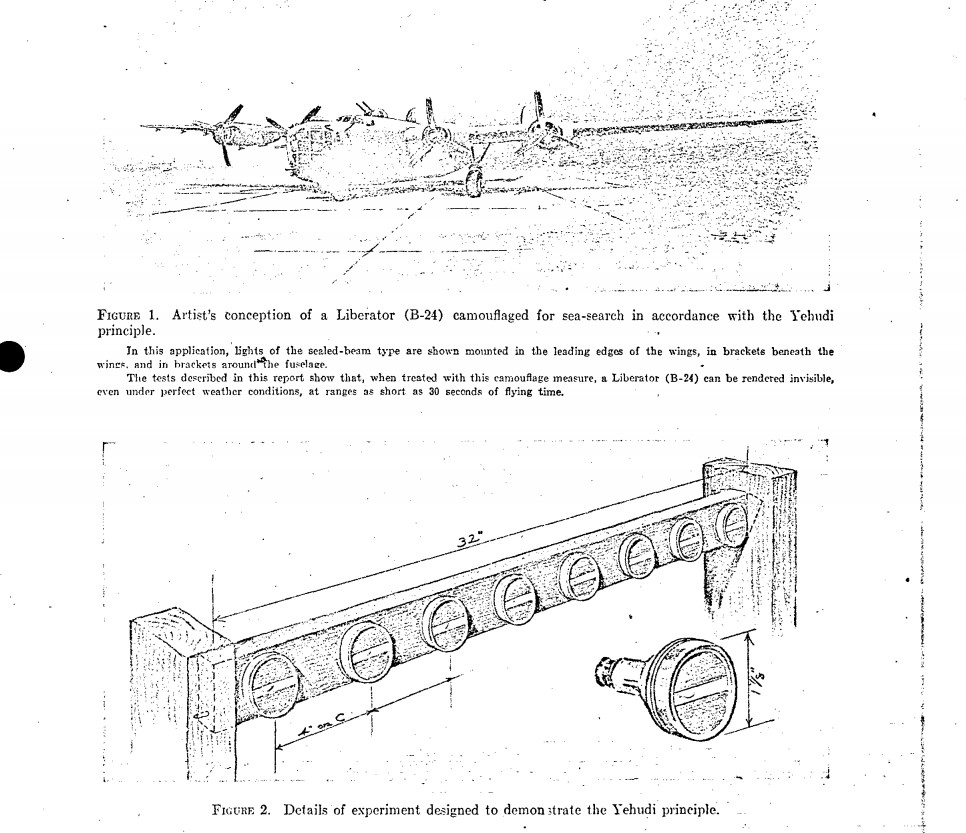
It’s still not known how widespread the use of Yehudi Lights was and the 1943 NDRC report notes that, despite the fact that the Naval Air Station at Patuxent River in Maryland was asked to make the necessary changes to its aircraft to allow for installation of the lights, the project was still not completed at the time of the document’s publication.
More Recent Versions Of Luminous Camouflage
Obviously, the Yehudi Lights and other luminous camouflage techniques are most effective during daytime conditions, but there are ways of camouflaging aircraft at night, as well. That same 1943 NDRC report discussed several different variations of black paint that were either non-reflective or otherwise designed to help an aircraft blend in with the night sky, and similar paint schemes are still in use today. Modern stealth aircraft, such as the F-117 Nighthawk attack jet and B-2 Spirit bomber, are painted in matte black or dark grey and are flown at night to limit their visual signature.
It’s unclear exactly what research pertaining to luminous camouflage the U.S. military conducted in the years following the Second World War, but during the Vietnam War, the U.S. Air Force tested light bulb-based systems similar to the Yehudi Lights, which could reduce the distance at which an aircraft could be visually detected. F-4 Phantom II aircraft were fitted with lights on their bellies and sides and painted sky blue and white in order to make them more difficult to be visually identified by enemy forces in what was known as the Compass Ghost project.

The F-4 was large and its two General Electric J79 turbojet engines left a large, dark exhaust trail in its wake, making it easy for observers to spot and making the desire for visual camouflage a particularly pressing one in its case. While the Compass Ghost system was found to reduce the range at which the F-4 could be seen by up to a third, advances in enemy radar technology and the system’s limitations meant the Compass Ghost configuration never made into widespread use.
Decades later, in the early 1990s, Boeing’s Phantom Works began testing the radical Bird of Prey aircraft in secret, which was designed to produce as little signature as possible across all forms – radar, infrared, acoustic, and visual. The aircraft remained in the black world throughout the ’90s and was only revealed to the public in 2002.
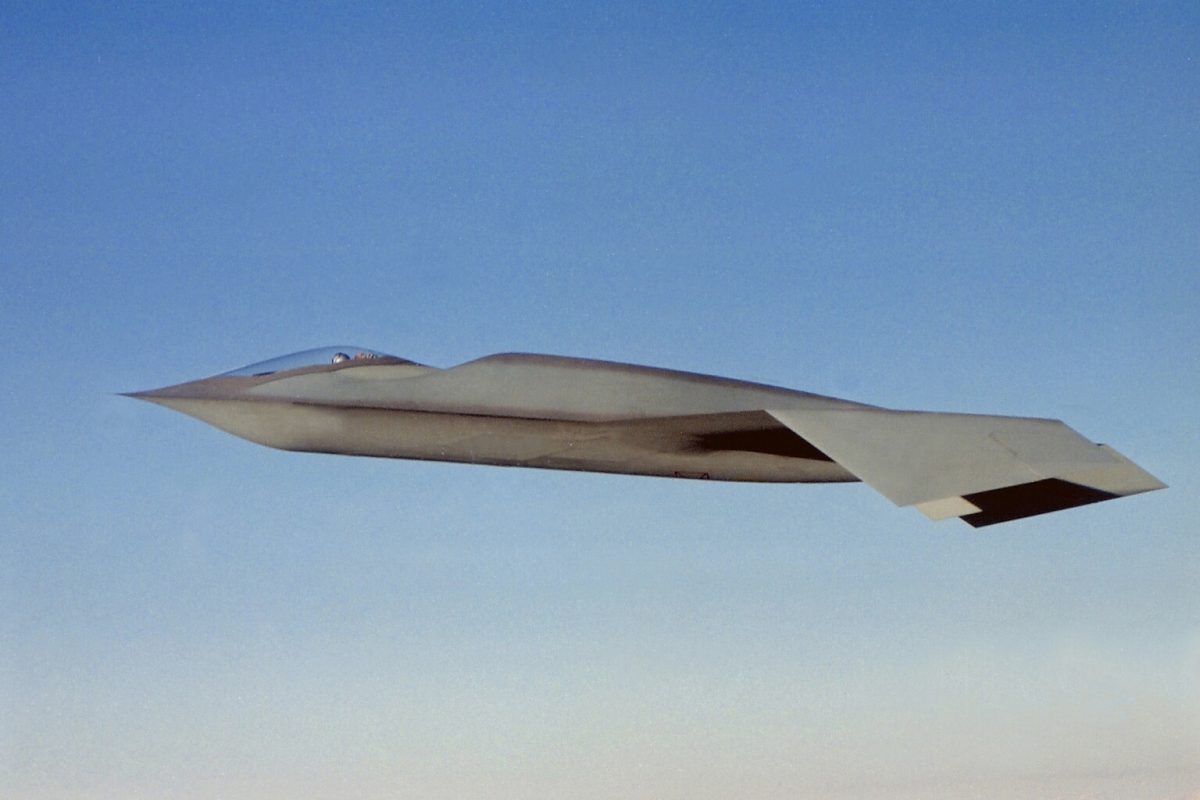
Perhaps owing to its Star Trek-inspired name, there were plenty of rumors of active camouflage featuring counter-illumination techniques surrounding the Bird of Prey program, though none was ever confirmed. However, we do know that the Bird of Prey’s airframe was designed specifically to test visual signature reduction techniques. The fact that the jet looked unlike any traditional aircraft, with many of the normal features seen on planes missing or drastically reduced in proportion, helped with decreasing its visual signature. The design also reduced or eliminated some shadows on the aircraft itself, making it revolutionary in terms of visual stealth to at least some degree.
Recent Advances In Illumination Technologies
While these early luminous camouflage systems had limited success and use (at least based off of what information is publicly available), the advances that have occurred in illumination, image production, and optical sensors over the last 75 years mean that if any similar systems exist today, they will have moved far beyond hanging light bulbs off of wings or scattering incandescent lights around an airframe.
Given how far something as civilian as a cellphone screen has advanced in 15 years, it’s safe to imagine just how far optical camouflage techniques have advanced in the 75 years since U.S. military first began researching methods of making aircraft less visible to the eye. One look at what is commercially available in terms of LED systems, electroluminescent paints and panels, and other illumination technologies is enough to assume the military is certainly attempting to leverage the same systems at higher degrees of scale and sophistication.

In recent years, light-emitting diodes (LEDs), electroluminescent paints and panels, thin form factor LCD screens, and other visual technologies have advanced significantly in terms of power requirements, brightness, image clarity, size, and automated control, pushing the possibility of visual stealth systems even closer to the realm of the probable, if they have not already arrived there already. Anecdotal and academic evidence that has trickled into the public realm over the last few decades suggests just that.
One such system without a doubt has its roots in the Yehudi Lights yet has updated its methods of light projection. The 1997 Popular Science article “Hiding in Plain Sight” describes tests of thin fluorescent panels on experimental aircraft that could camouflage these aircraft even against the daytime sky. The systems described worked much like the Yehudi Lights, but featured small articulated slits that could be used to aim the light emitted from the aircraft.
According to one technician working on these systems at the Tonopah Test Range, “trying to pick out the aircraft against a clear blue sky was next to impossible. The only time we could easily spot the aircraft was when it produced an unexpected contrail.” The article goes on to describe even more advanced systems tested at some of the United States’ most secretive facilities:
Defense contractors have told POPULAR SCIENCE that an even more exotic skin is being tested on two stealth aircraft at the high-security Groom Lake air base [Area 51] in Nevada. The skin is derived from an electromagnetically conductive polyaniline-based radar-absorbent composite material. It is optically transparent except when electrically charged, much like the LCDs used in laptop computers.
What makes this new material attractive is that it can change brightness and color instantaneously. Photo-sensitive receptors, mounted on all sides of the plane, read the ambient light and color of the sky and ground. An onboard computer adjusts the brightness, hue, and texture of the skin to match the sky above the plane or the terrain below it.
In the 20 years since that article’s publication, further examples of similar systems have been appearing appeared at test ranges. In 2008 and 2009, Flight Global reported on the use of electroluminescent panels on small unmanned air vehicles and a newer LED-based system operating on the same principles of light-sensing and projection as in other examples, writing that “recent developments for sensors and lighting technology hold the promise of revolutionizing this old idea. Sensors embedded in an aircraft skin can now precisely measure the brightness of the air as an aircraft moves through the sky.” Similar systems are being tested in academic laboratories around the world.

As recently as 2015, several startups have been testing methods of using commercial e-ink displays to actively camouflage small drones by displaying similar colors and brightness as the surrounding sky. Tests have already been conducted to determine if a drone’s entire fuselage or wing structure could be lined in these e-ink panels, rendering it nearly translucent in certain conditions.

A Lockheed Martin press release from 2015 describes advances in visual cloaking in relation to the F-35 Lightning II. The press release never states that the F-35 sports such a system, but it does note a pair of advances from the University of Rochester and the Lawrence Berkeley National Laboratory that were both able to produce scalable cloaking devices capable of rendering 3D objects invisible using metamaterials, or specially-engineered materials which have properties not found in naturally occurring materials.
While metamaterial research has been a common subject of invisibility technology for some time, the extent to which they have been tested as a means of rendering aircraft invisible is unknown. Still, the inclusion of this optical metamaterial research in an official Lockheed Martin press release is curious. We would be remiss if we didn’t mention the similarly curious statements made by President Donald Trump in which he has repeatedly called the F-35 an “invisible fighter” and has never differentiated between radar and the visual realm. Maybe he has been briefed on such a capability, even if it is aspirational in nature or being eyed as a future development for the controversial aircraft.
Metamaterials: Beyond Counter Illumination
While methods to reduce the visual signature of an aircraft have existed for years, it could be that metamaterials hold the key to rendering aircraft truly invisible. The design and applications of metamaterials have become a vital area of research for a wide range of uses not limited to the optical camouflage of aircraft. According to the Fiscal Year 2009 President’s Budget Request for DoD Science & Technology, the Department of Defense invested $35 million into metamaterials research in 2008. In the National Defense Authorization Act for Fiscal Year 2018, the Air Force requested $124,264,000 for materials applied research alone. USAF budget documents show that this materials research involved “nanoscale materials, metamaterials”, and “quantum materials for aerospace applications”.
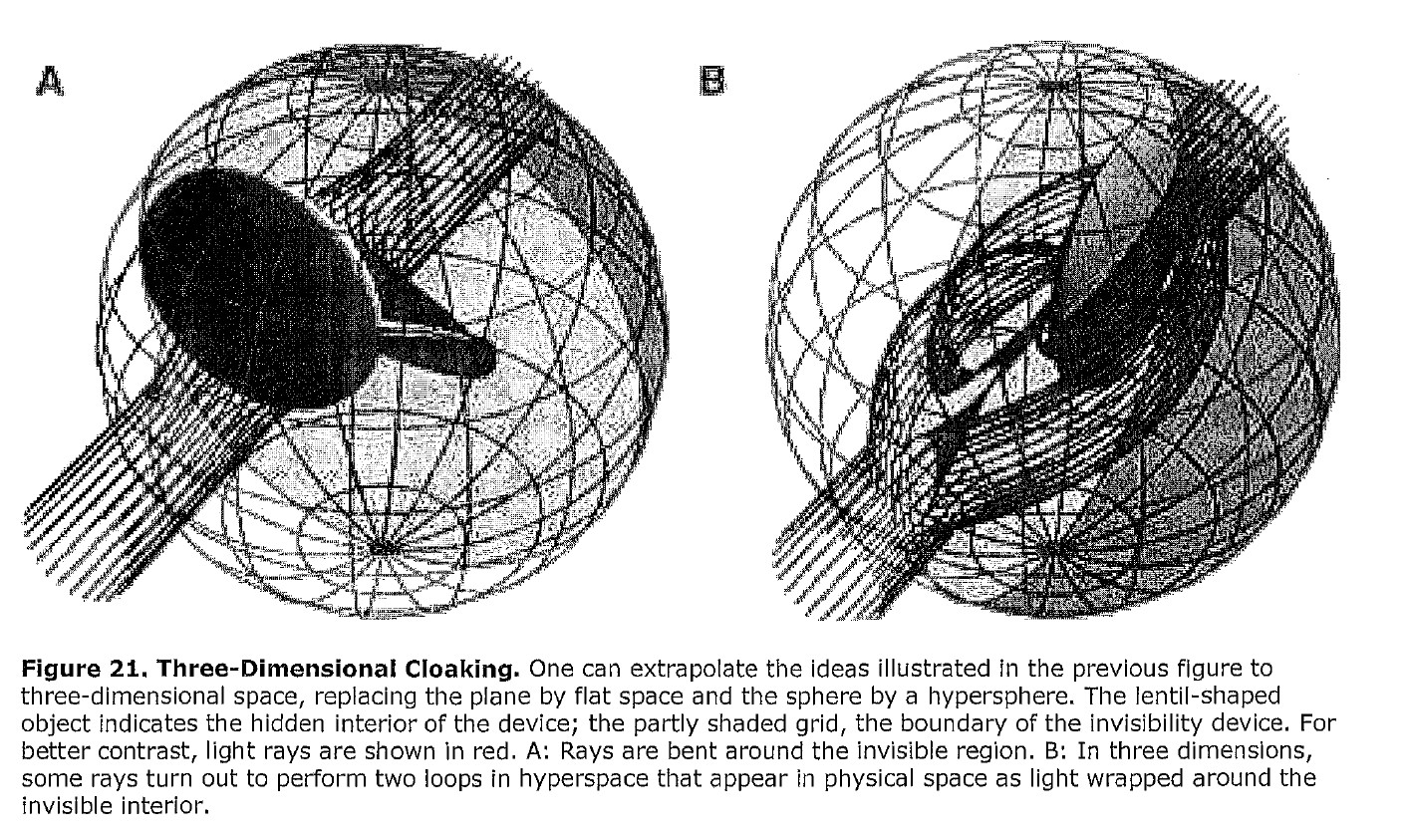
A 2010 Defense Intelligence Research Document (DIRD) titled “Invisibility Cloaking: Theory and Experiments,” which was prepared by the DIA’s Defense Warning Office’s Advanced Aerospace Weapon System Applications (AAWSA) program, was written by Ulf Leonhardt, a pioneer in invisibility sciences, optical metamaterials, and various forms of cloaking.

Leonhardt’s “Invisibility Cloaking” DIRD outlines a multitude of visual cloaking approaches ranging from the theoretical to the practical. Various metamaterials are discussed that can manipulate or absorb visible light, but the report concludes that while it is possible in the laboratory to create metamaterials that filter specific wavelengths of light, these materials remain fundamentally ineffective at cloaking objects out of the entire visible spectrum:
The demonstrated microwave-cloaking device only works correctly for microwave radiation of a specific frequency (wavelength), and the proposed optical cloaking device would also work for just one frequency; that is, for only one color. Light of different colors would be severely distorted. So, to see things disappear in a cloaking device, one should wear tinted glasses of the required color, which of course completely defeats the purpose. This design flaw is inevitable, no matter how much progress is made in the technology of metamaterials, for the following reason: the device is designed such that light waves traveling around the object enclosed by the cloaking device are completely indistinguishable from light waves propagating through empty space.
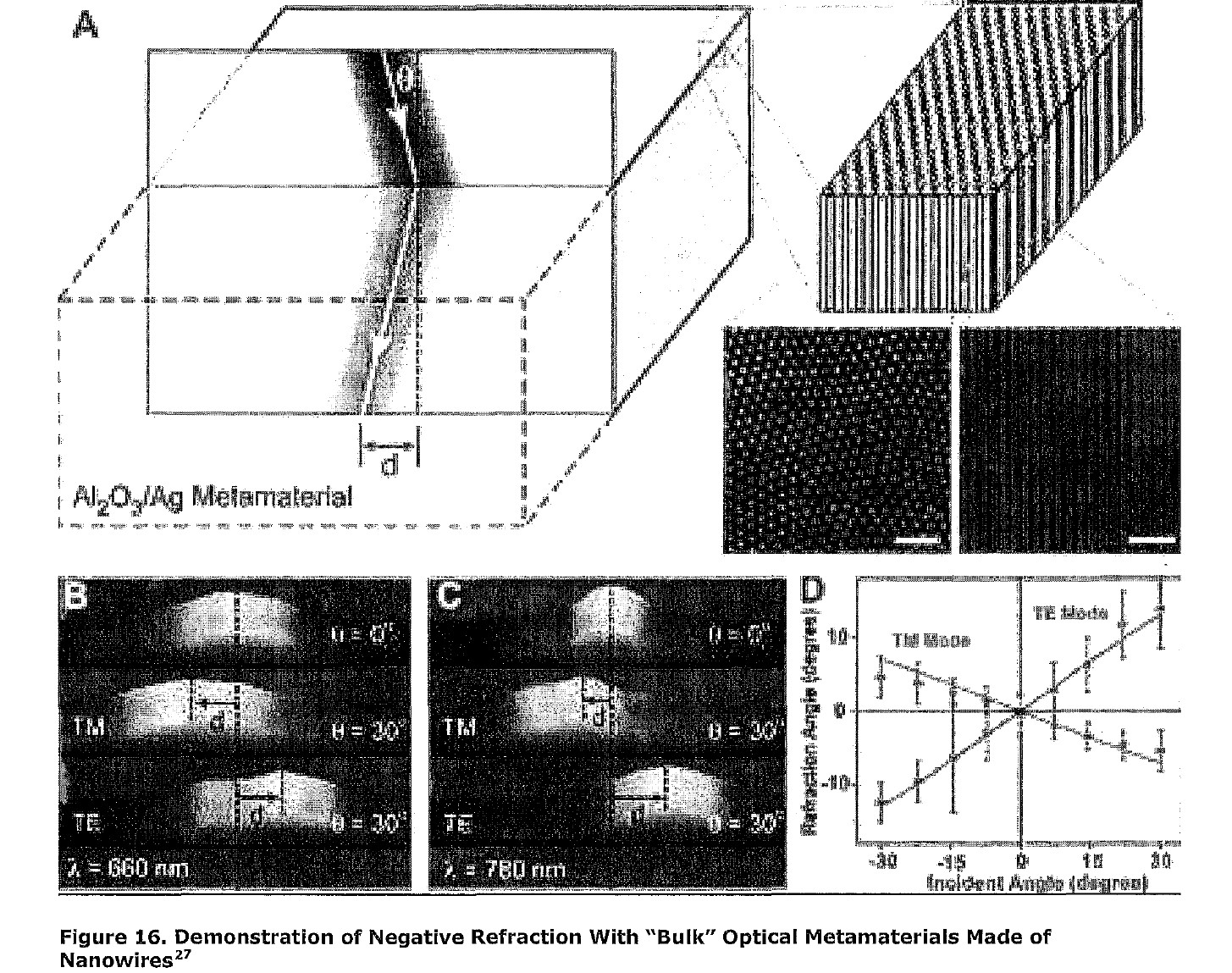
However, the report adds in conclusion that “the greatest challenge for turning invisibility from an idea into a workable device is not technology but imagination”:
Perfect cloaking devices are impossible because they require materials where the speed of light approaches infinity. Imperfect cloaking devices could be made. Such devices implement suitable curved-space geometries. For electromagnetic microwaves, cloaking devices are definitely within reach of the present technology. Whether invisibility in the visible range of the spectrum will become a reality is not entirely clear yet. Most probably, this will depend more on the new theoretical research than on advances in new materials, and on the application of mathematical intelligence, intuition, and imagination.
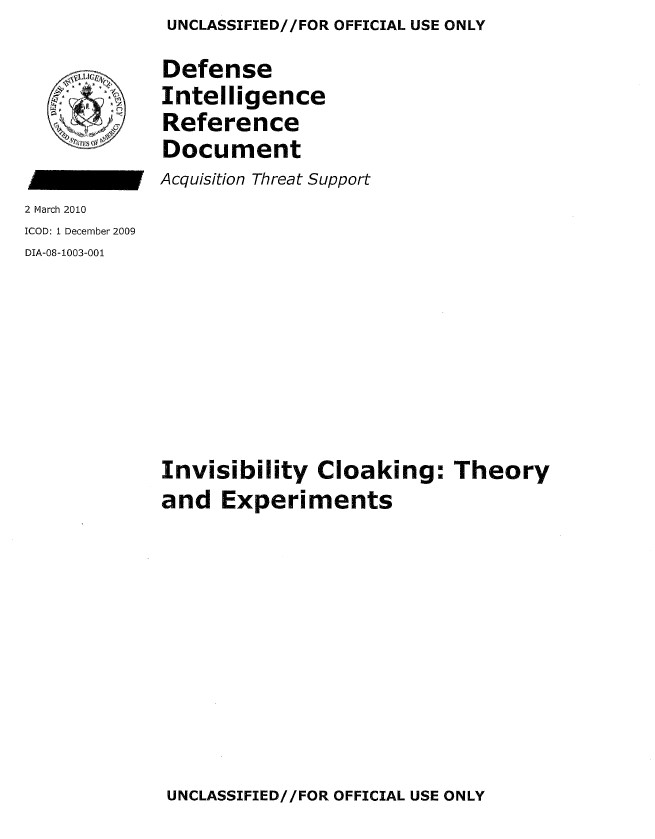
Similarly, other studies funded by the Air Force Research Laboratory between 2011 and 2016 and unearthed via FOIA detail the collaboration between Air Force researchers and scientists both as they experimented with various methods of metamaterials and “transformation optics” and even “invisibility cloak” construction.
The Air Force Research Laboratory funded a report in 2013 that concluded that “recent advances in metamaterial research have shifted cloaking possibilities to this new field through transformation optics, creating a shell which effectively cloaks the space inside the shell by diverting EM radiation around it.” The report mostly focuses on the microscopic structures that could provide some form of cloaking and methods of measuring their effectiveness, and concludes by stating that “there is still a big gap between the wishes – desired permeability and permittivity distribution – and reality – the real electromagnetic parameters of different metamaterial structures.”
Still, scientists have already published successful results with materials that mimic the skin of cuttlefish and other cephalopods, enabling the construction of “thin sheets that can be conformally wrapped onto solid objects to modulate their visual appearance” similar to the way that cuttlefish can change the color of their skin to match their surroundings. Judging by the number of studies the Air Force has funded and the recent claimed advances in materials and optics that have come out of private laboratories like the British Columbia-based Hyperstealth Biotechnology Corporation, it is possible that some level of “invisible” aircraft using such methods could be plausible.
But once again, it’s not necessarily about making an aircraft perfectly or nearly perfectly invisible, but rather reducing its visual signature overall and reducing the distance at which it can be detected visually enough to make it worth the price and performance penalties incurred by integrating such a capability onto an aircraft. While extreme invisibility may still be an academic and theoretical exercise at this time, major and worthwhile reductions in visual signature may very well be a reality.
The Need For Invisible Aircraft
There are clear benefits to equipping many aircraft types that perform many types of missions with adaptive camouflage, but for stealthy surveillance aircraft that are intended to persist for long periods over enemy airspace, visual stealth would be especially beneficial. Vehicles like the RQ-170 Sentinel have reduced infrared signature and can evade radar through low observable design features, strict emissions control, electronic warfare, and dynamic mission planning and control, but evading visual identification would offer another highly important layer of survivability.
The threats these types of aircraft face are not transient in nature, unlike fighters or transports moving to or from a target, in most cases. The penetrating and persistent reconnaissance mission that focuses on capturing extremely high-quality intelligence directly over or very near where the enemy is operating over time also makes aircraft tasked with this role more vulnerable to all forms of detection, especially the visual kind. The fact that these aircraft are subsonic and rely on their ability to remain undetected by sensors for survivability makes them even more vulnerable when it comes to visual detection, as well. In other words, they don’t have the ability to run like a fighter jet or evade the enemy’s attacks via hard maneuvering once detected.

Because of these unique challenges, these deep penetrating aircraft, which include the still officially undisclosed RQ-180 and the upcoming B-21 Raider, which is really a multirole platform, not just a bomber, as well as the RQ-170, and possibly USAF’s mysterious missing unmanned combat air vehicles, would be top candidates to receive visual stealth technologies in an operational manner.
Beyond this narrow, but hugely important capability set, because of the increasing potency integrated defense networks, it’s also more important than ever to have other stealthy combat aircraft or infiltration/exfiltration vehicles avoid visual detection and survive, even if briefly, in enemy territory or heavily contested environments. Organizations such as Air Force Special Operations Command (AFSOC) continue to explore low-observability technologies for their next-generation special operations aircraft, particularly transports and short takeoff and landing (STOL) aircraft.
As part of The War Zone’s reporting on AFSOC’s R&D into these concepts, we obtained via the Freedom of Information Act (FOIA) the AFSOC document “Cost Benefit Analysis of Potential AFSOC MC-130H/J “New Magic” Modifications (Project 10).” The document discusses the bizarrely well-established need for a stealthy STOL aircraft for special operations and the potential for implementing recent advances in active optical camouflage.
The briefing mentioned carbon nanotube-based coatings, light-absorbing skin created through laser surface structuring, and metamaterials. All of which could theoretically reduce or alter an aircraft’s appearance in the visual light spectrum and make it more difficult for the enemy to identify an aircraft at a distance and even in daylight.
Studies have found that surfaces lined with vertical carbon nanotubes can literally absorb every wavelength of light through essentially ‘trapping’ light within these microscopic non-reflective tubes. Femtosecond laser surface structuring can achieve similar results through creating microscopic textures that can change the way a material scatters or absorbs various wavelengths of light.
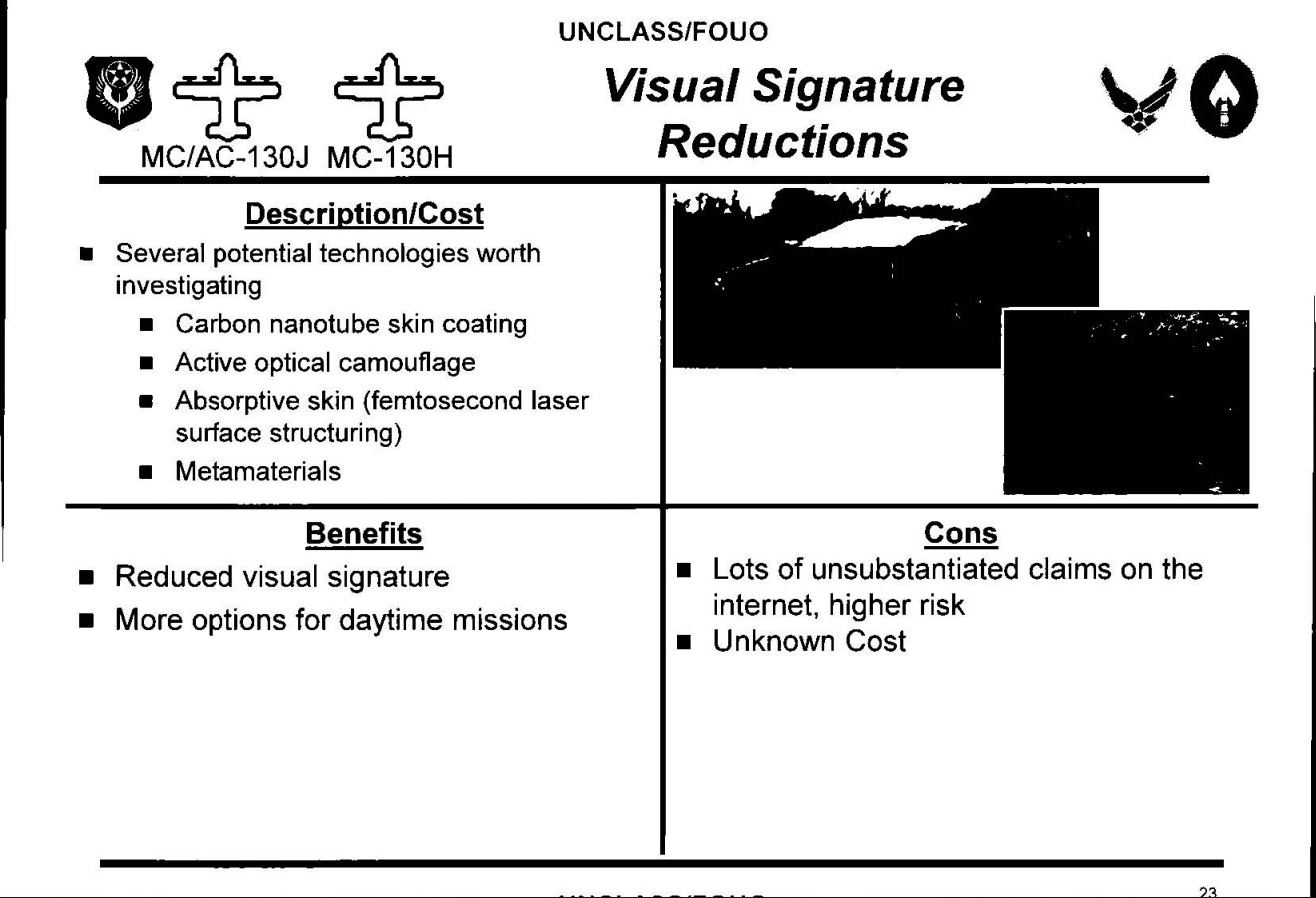
It isn’t clear if the AFSOC proceded with investigating or developing these technologies or what level of information the people who put the document together had on what classified capabilities exist at the time of writing.
Not Seeing Is Believing
By the very nature of high-end military aerospace research and development and operational concerns, it’s safe to say that there are plenty of classified technologies currently in the air of which very few members of the public are aware. There is also an established pattern of research and development into visual stealth, invisibility, and cloaking systems that dates back to World War II. As such, there always remains the real possibility, if not probability, that there have been advances in invisibility tech that remain far too sensitive to disclose, some of which may, in fact, be already in use.
Beyond the hard documentation that does exist, the hunt for visual signature reduction on combat aircraft has been heavily rumored to be a major endeavor at places such as Area 51, as it should be, especially now that deep penetrating and persistent aerial reconnaissance is a real mission set. In addition, these concepts are applicable beyond aircraft and it’s likely that the other branches of the U.S. military are working with each other and private laboratories toward common ends. The Army, especially, has a long history of active camouflage programs.
Given the advances in illumination and image production even in just the last decade or so, it’s no stretch of the imagination to say that there are likely breakthrough methods of visually camouflaging aircraft that at least show real promise. Who knows, they may even first become evident once the B-21 is finally revealed in the not so distant future or an aircraft, such as the RQ-180, which exists in the shadows comes into the light. Then again, maybe such technology will emerge on far more lowly, but still remarkably frightening platforms, like small swarming drones. We just don’t know.
In the meantime, we’ll continue to do our best to keep an eye out for any visible developments in invisible aircraft technology.
